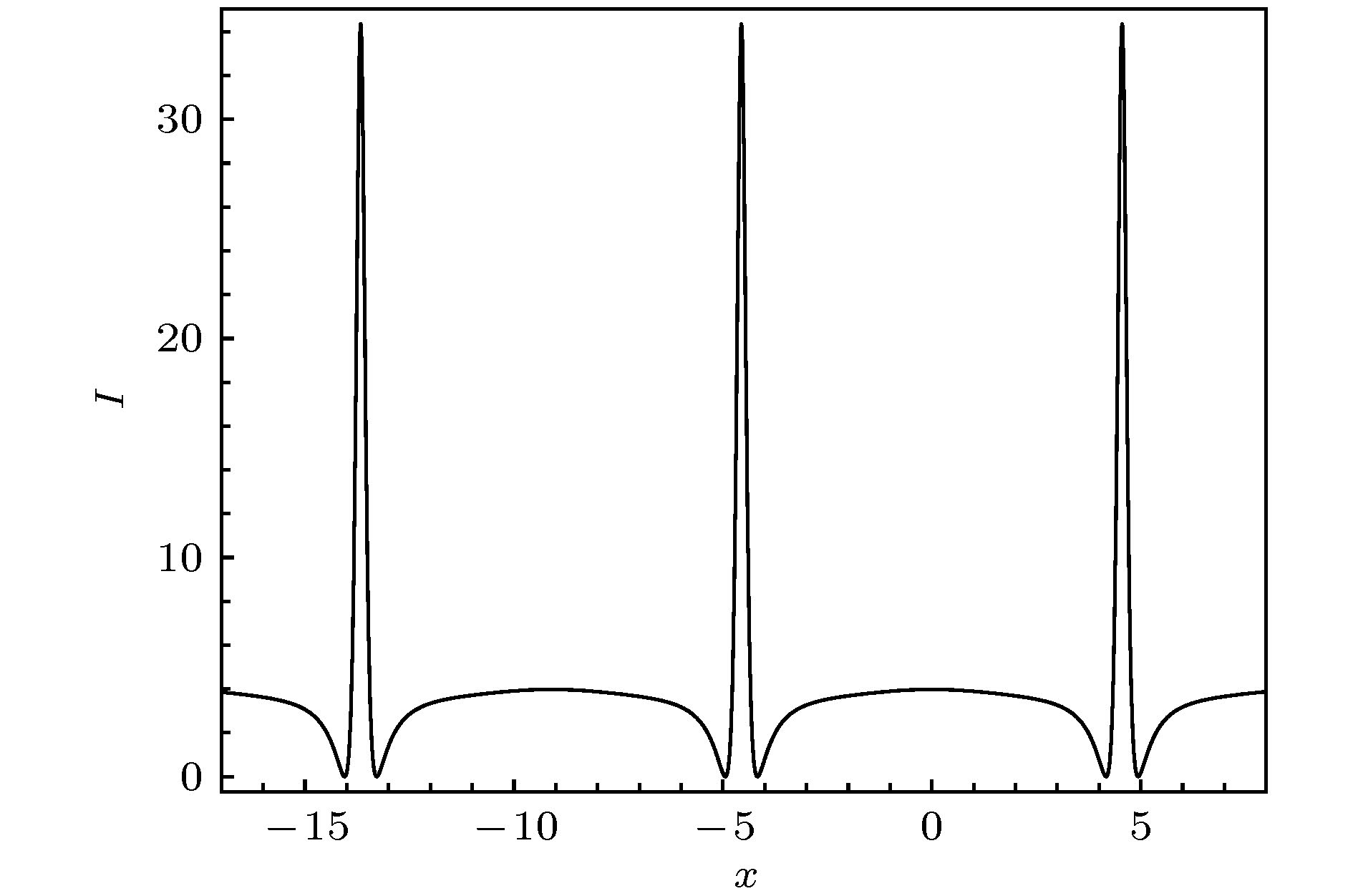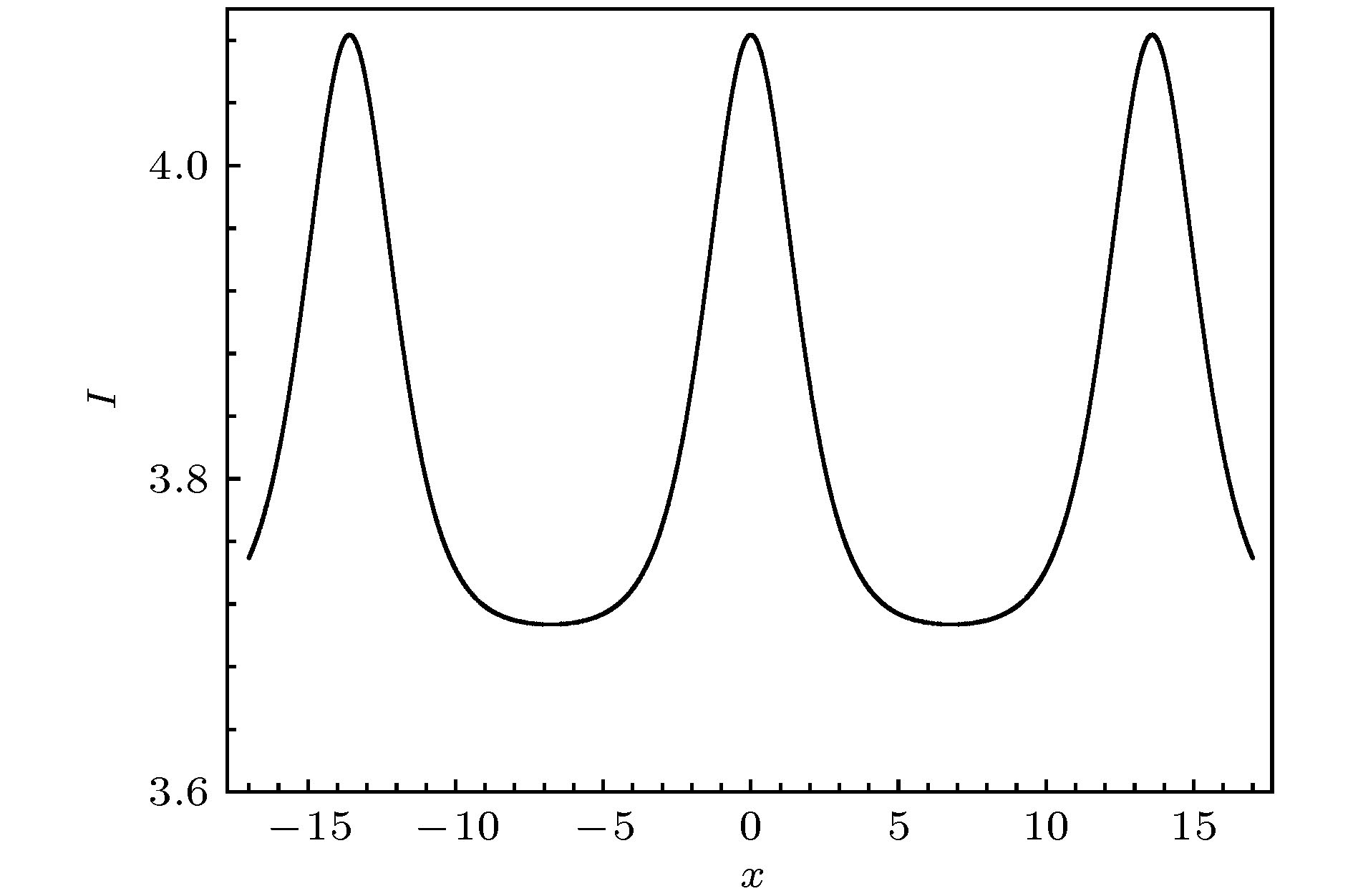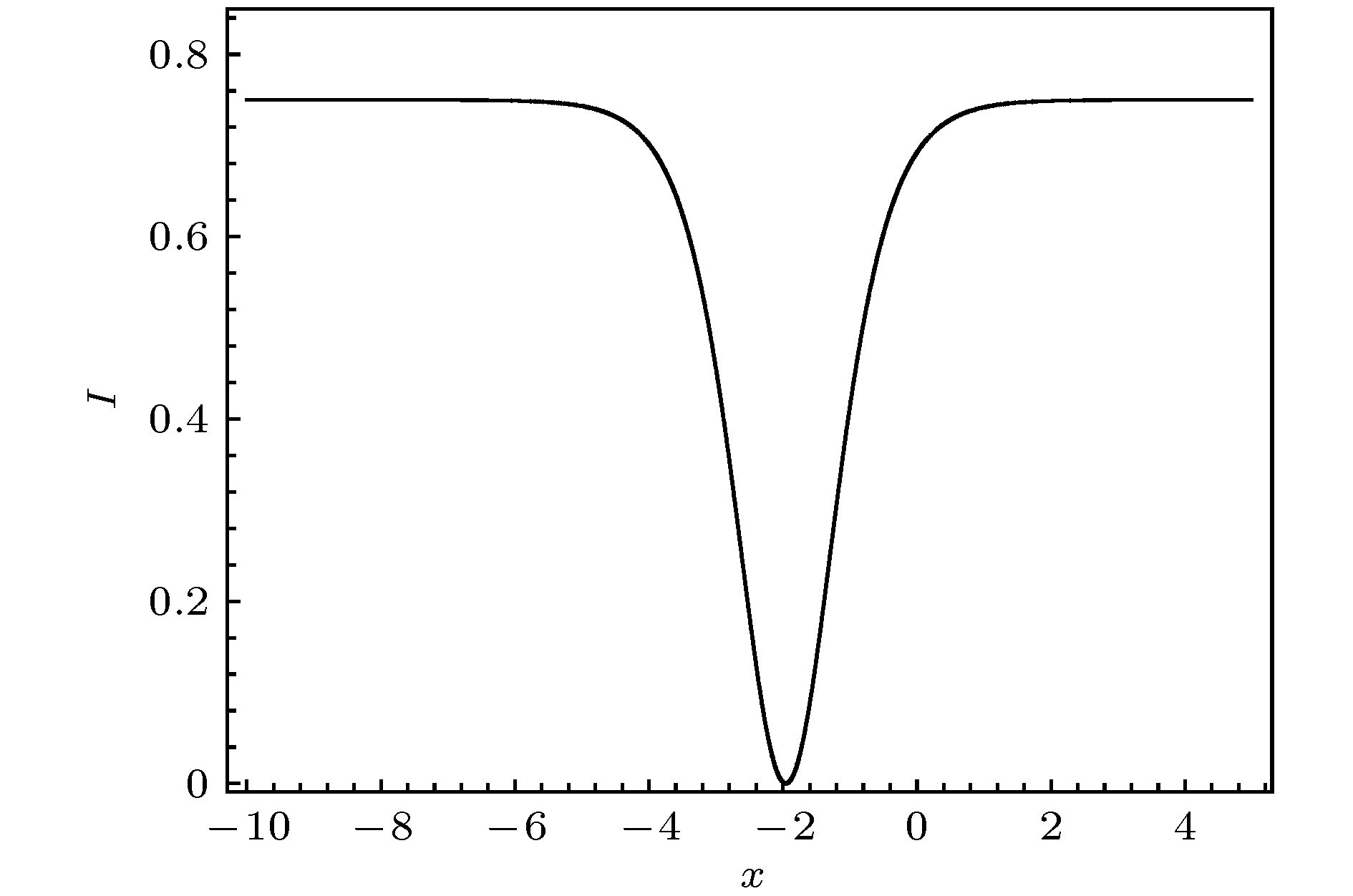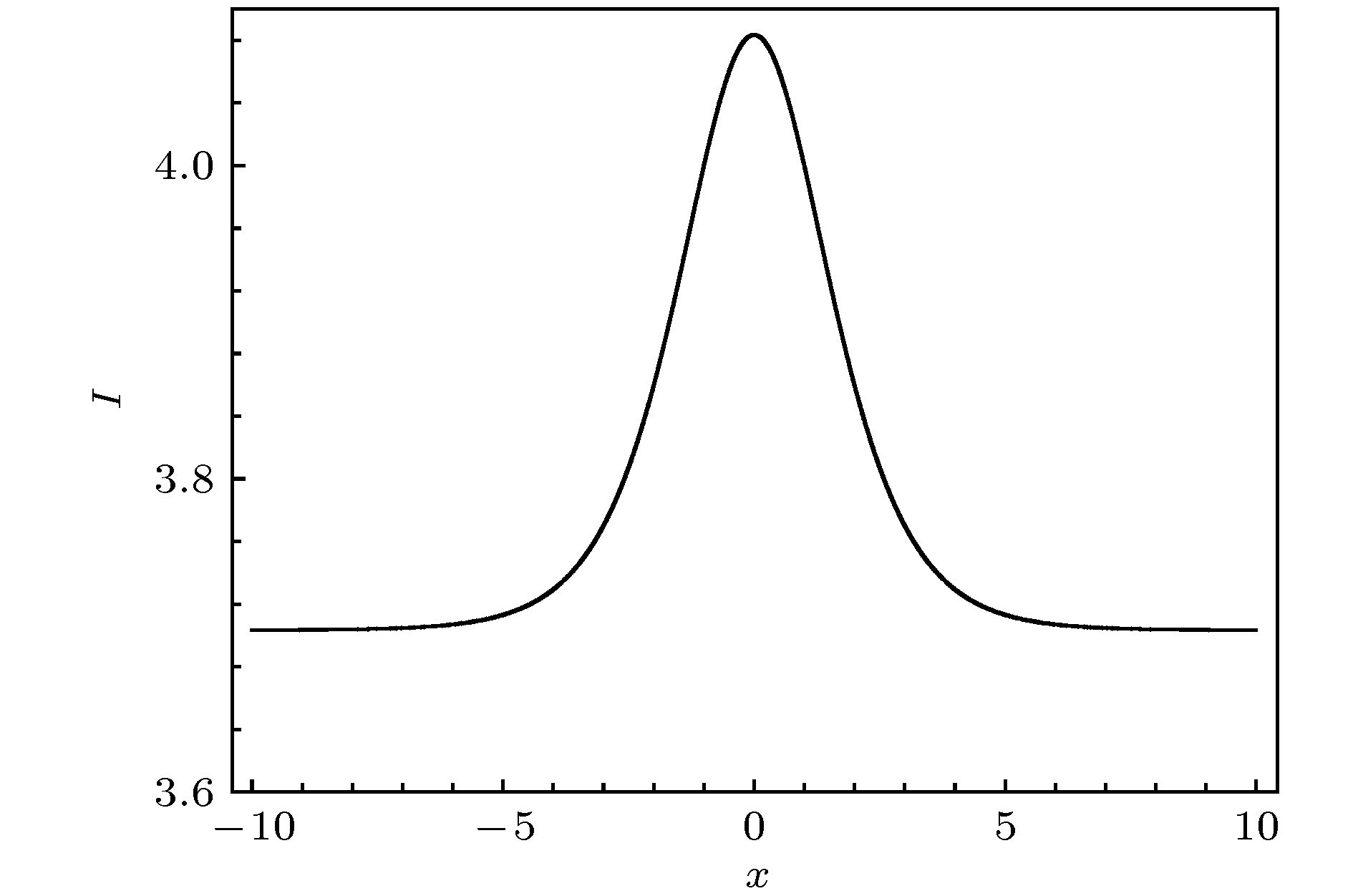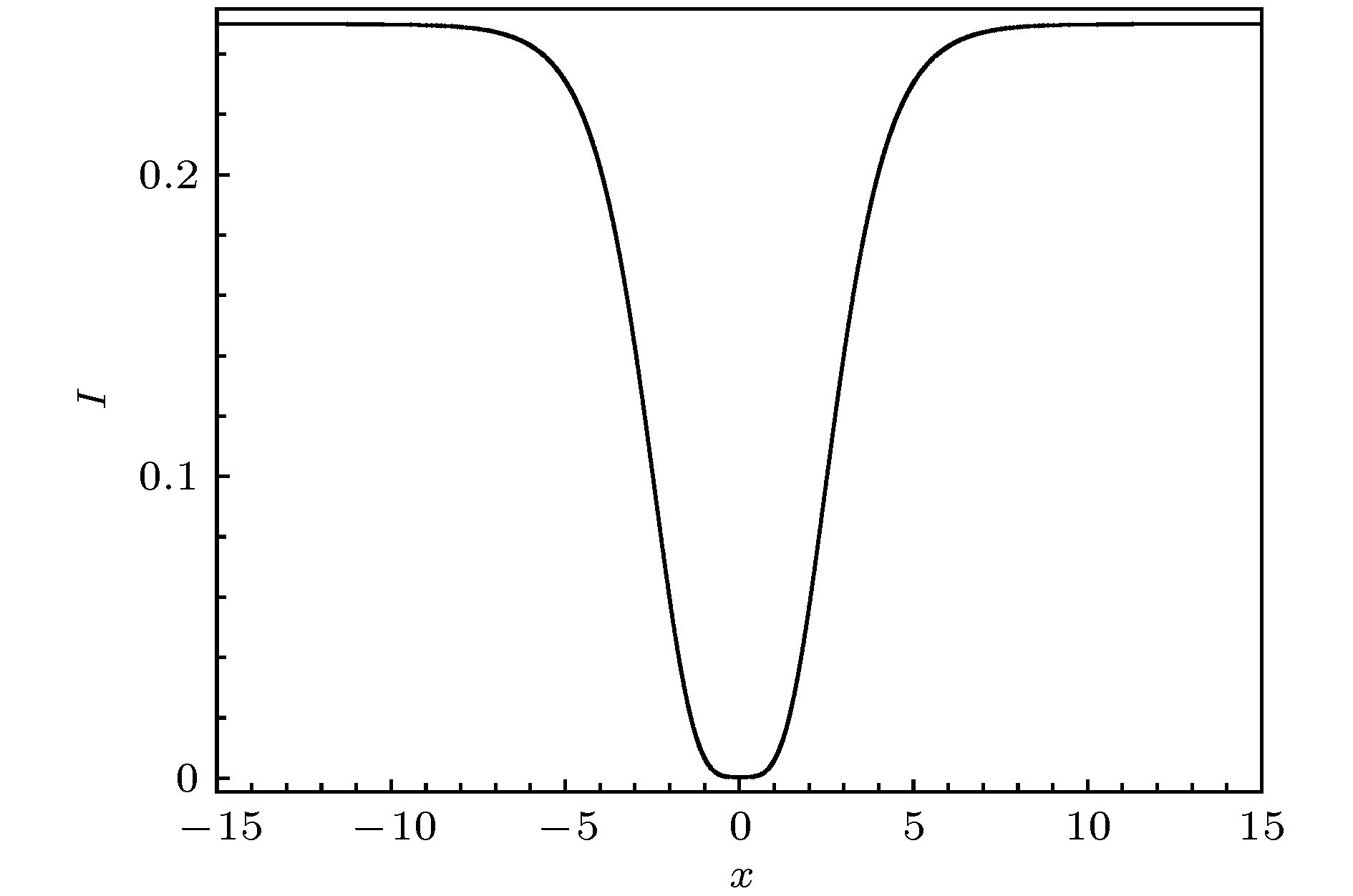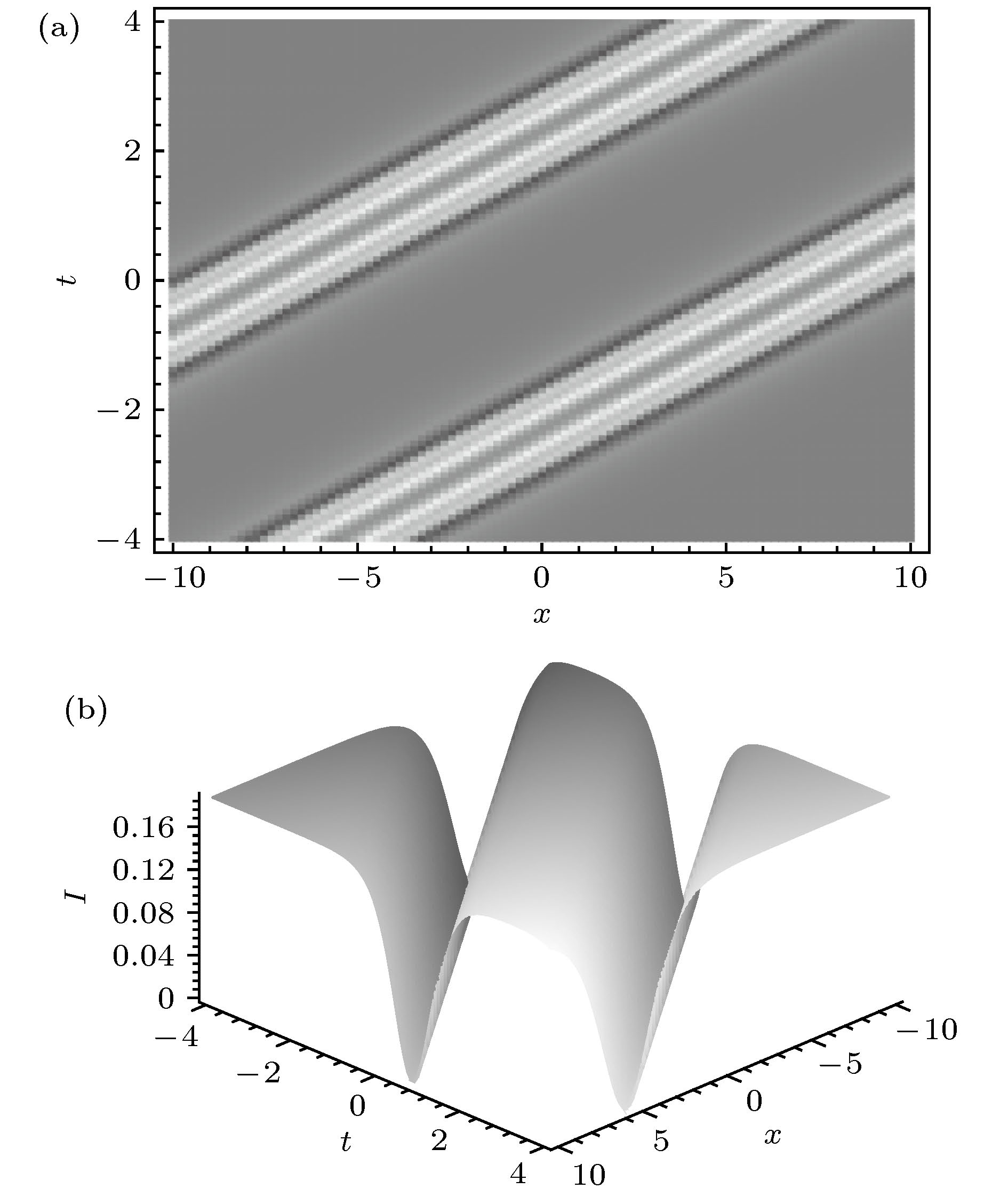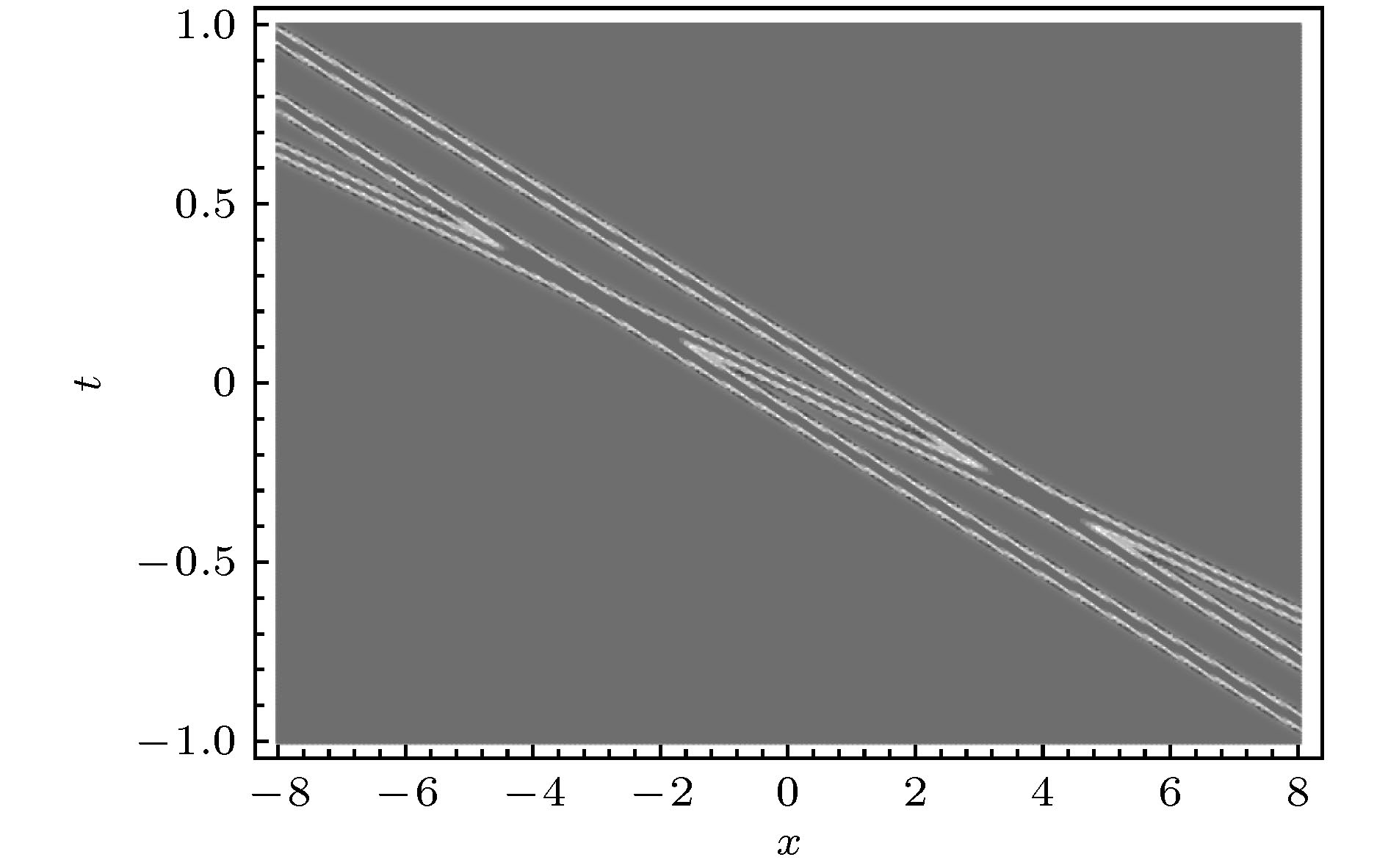-
The study on soliton molecules is one of the important topics in nonlinear science especially in nonlinear optics. The bright soliton molecules have been experimentally observed in optics, however, the dark soliton molecules have not yet been experimentally observed. Theoretically, the soliton molecules have been found for some coupled nonlinear systems. Nevertheless, the soliton molecules have not been obtained for non-coupled single component nonlinear models. In this paper, we first study the exact periodic waves (soliton lattices) and solitary waves for a nonlinear nonintegrable optical model with second and third order dispersions and high order nonlinear effects including self-steeping, Raman scattering and nonlinear dispersion. Two types of dark soliton lattice and three types of soliton lattice are explicitly exhibited for general nonintegrable system. Five types of bright (with and without gray background), dark and gray solitons can be obtained from the limit cases of the modules of the soliton lattices. For an integrable case, using a novel generalized bilinear form of a single component nonlinear system, the multi-soliton solutions are obtained and expressed by a completely new form which are invariant under the full reversal transformations such as the parity, the time reversal, the charge conjugate and the field reversal. To find soliton molecules, a novel mechanism, the velocity resonant, is proposed. Starting from the multi-soliton solutions and using the velocity resonance mechanism, the analytical expression of the dark soliton molecules can be readily obtained. For the model given in this paper, the integrable higher order nonlinear Schrodinger equation, one can proved that the interactions among the dark soliton molecules and the usually solitons are elastic. It is worth pointing out that soliton molecules can also exist in the case of nonintegrable systems.
-
Keywords:
- dark soliton molecules /
- higher order nonlinear effects /
- elastic interactions /
- integrable systems
[1] Kivshar Y S, Malomed B A 1989 Rev. Mod. Phys. 61 763
 Google Scholar
Google Scholar
[2] Köttig F, Tani T, Travers J C, Russell P St J 2017 Phys. Rev. Lett. 118 263902
 Google Scholar
Google Scholar
[3] Strogatz S 2001 Nature (London) 410 268
 Google Scholar
Google Scholar
[4] Forte S 1992 Rev. Mod. Phys. 64 193
 Google Scholar
Google Scholar
[5] Hertog T, Horowitz G T 2005 Phys. Rev. Lett. 94 221301
 Google Scholar
Google Scholar
[6] Drummond P D, Kheruntsyan K V, He H 1998 Phys. Rev. Lett. 81 3055
 Google Scholar
Google Scholar
[7] Lou S Y, Huang F 2017 Sci. Rep. 7 869
 Google Scholar
Google Scholar
[8] Wright L G, Christodoulides D N, Wise F W 2017 Science 358 94
 Google Scholar
Google Scholar
[9] Dudley J M, Dias F, Erkintalo M, Genty G 2014 Nat. Photonics 8 755
 Google Scholar
Google Scholar
[10] Stratmann M, Pagel T, Mitschke F 2005 Phys. Rev. Lett. 95 143902
 Google Scholar
Google Scholar
[11] Herink G, Kurtz F, Jalali B, Solli D R, Ropers C 2017 Science 356 50
 Google Scholar
Google Scholar
[12] Liu X M, Yao X K, Cui Y D 2018 Phys. Rev. Lett. 121 023905
 Google Scholar
Google Scholar
[13] 徐中巍, 张祖兴 2013 62 104210
 Google Scholar
Google Scholar
Xu Z W, Zhang Z X, 2013 Acta Phys. Sin. 62 104210
 Google Scholar
Google Scholar
[14] Sheppard A P, Kivshar Y S 1997 Phys. Rev. E 55 4773
 Google Scholar
Google Scholar
[15] Lakomy K, Nath R, Santos L 2012 Phys. Rev. A 86 013610
 Google Scholar
Google Scholar
[16] Lou S Y 2019 arxiv: 1909.03399 v1[nlin.SI]
[17] Hirota R 1971 Phys. Rev. Lett., 27 1192
 Google Scholar
Google Scholar
[18] Liu S J, Tang X Y, Lou S Y 2018 Chin. Phys. B 27 060201
 Google Scholar
Google Scholar
[19] Ablowitz M J, Clarkson P A 1991 Solitons, Nonlinear Evolution Equations and Inverse Scattering (Cambridge: Cambridge University Press)
[20] Li Y Q, Chen J C, Chen Y, Lou S Y 2014 Chin. Phys. Lett. 31 010201
 Google Scholar
Google Scholar
[21] 陈登远 2006 孤子引论 (北京: 科学出版社) 第14−42页
Chen D Y 2006 Introduction on Solitons (Beijing: China Science Publishing and Media Ltd) pp14−42
[22] Lou S Y 2018 J. Math. Phys. 59 083507
 Google Scholar
Google Scholar
[23] Sasa N, Satsuma J 1991 J. Phys. Soc. Jpn. 60 409
 Google Scholar
Google Scholar
[24] Hirota R 1973 J. Math. Phys. 14 805
 Google Scholar
Google Scholar
[25] Kaup D J, Newell A C 1978 J. Math. Phys. 19 798
[26] 楼森岳 2020 69 010503
 Google Scholar
Google Scholar
Lou S Y 2020 Acta Phys. Sin. 69 010503
 Google Scholar
Google Scholar
-
-
[1] Kivshar Y S, Malomed B A 1989 Rev. Mod. Phys. 61 763
 Google Scholar
Google Scholar
[2] Köttig F, Tani T, Travers J C, Russell P St J 2017 Phys. Rev. Lett. 118 263902
 Google Scholar
Google Scholar
[3] Strogatz S 2001 Nature (London) 410 268
 Google Scholar
Google Scholar
[4] Forte S 1992 Rev. Mod. Phys. 64 193
 Google Scholar
Google Scholar
[5] Hertog T, Horowitz G T 2005 Phys. Rev. Lett. 94 221301
 Google Scholar
Google Scholar
[6] Drummond P D, Kheruntsyan K V, He H 1998 Phys. Rev. Lett. 81 3055
 Google Scholar
Google Scholar
[7] Lou S Y, Huang F 2017 Sci. Rep. 7 869
 Google Scholar
Google Scholar
[8] Wright L G, Christodoulides D N, Wise F W 2017 Science 358 94
 Google Scholar
Google Scholar
[9] Dudley J M, Dias F, Erkintalo M, Genty G 2014 Nat. Photonics 8 755
 Google Scholar
Google Scholar
[10] Stratmann M, Pagel T, Mitschke F 2005 Phys. Rev. Lett. 95 143902
 Google Scholar
Google Scholar
[11] Herink G, Kurtz F, Jalali B, Solli D R, Ropers C 2017 Science 356 50
 Google Scholar
Google Scholar
[12] Liu X M, Yao X K, Cui Y D 2018 Phys. Rev. Lett. 121 023905
 Google Scholar
Google Scholar
[13] 徐中巍, 张祖兴 2013 62 104210
 Google Scholar
Google Scholar
Xu Z W, Zhang Z X, 2013 Acta Phys. Sin. 62 104210
 Google Scholar
Google Scholar
[14] Sheppard A P, Kivshar Y S 1997 Phys. Rev. E 55 4773
 Google Scholar
Google Scholar
[15] Lakomy K, Nath R, Santos L 2012 Phys. Rev. A 86 013610
 Google Scholar
Google Scholar
[16] Lou S Y 2019 arxiv: 1909.03399 v1[nlin.SI]
[17] Hirota R 1971 Phys. Rev. Lett., 27 1192
 Google Scholar
Google Scholar
[18] Liu S J, Tang X Y, Lou S Y 2018 Chin. Phys. B 27 060201
 Google Scholar
Google Scholar
[19] Ablowitz M J, Clarkson P A 1991 Solitons, Nonlinear Evolution Equations and Inverse Scattering (Cambridge: Cambridge University Press)
[20] Li Y Q, Chen J C, Chen Y, Lou S Y 2014 Chin. Phys. Lett. 31 010201
 Google Scholar
Google Scholar
[21] 陈登远 2006 孤子引论 (北京: 科学出版社) 第14−42页
Chen D Y 2006 Introduction on Solitons (Beijing: China Science Publishing and Media Ltd) pp14−42
[22] Lou S Y 2018 J. Math. Phys. 59 083507
 Google Scholar
Google Scholar
[23] Sasa N, Satsuma J 1991 J. Phys. Soc. Jpn. 60 409
 Google Scholar
Google Scholar
[24] Hirota R 1973 J. Math. Phys. 14 805
 Google Scholar
Google Scholar
[25] Kaup D J, Newell A C 1978 J. Math. Phys. 19 798
[26] 楼森岳 2020 69 010503
 Google Scholar
Google Scholar
Lou S Y 2020 Acta Phys. Sin. 69 010503
 Google Scholar
Google Scholar
Catalog
Metrics
- Abstract views: 19374
- PDF Downloads: 540
- Cited By: 0















 DownLoad:
DownLoad:

